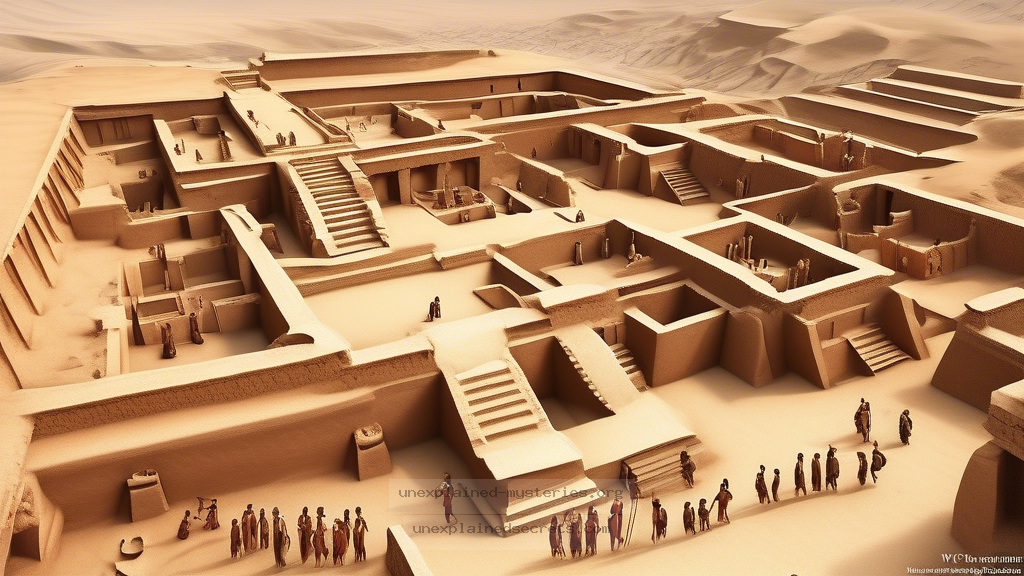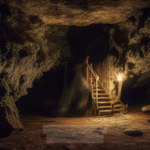What Happened to the Advanced Civilization of the Indus Valley?
What Happened to the Advanced Civilization of the Indus Valley?
The Indus Valley Civilization (IVC), one of the world’s earliest urban cultures, flourished around 2500 BCE in what is now Pakistan and northwest India. Despite its significant advancements in urban planning, architecture, and social organization, the civilization mysteriously declined and eventually vanished by around 1900 BCE. This enigmatic disappearance has puzzled historians, archaeologists, and researchers for decades. Understanding the fate of the Indus Valley Civilization is crucial not only for unraveling the history of human development but also for gaining insights into the resilience and vulnerabilities of complex societies. In this blog post, we will explore various aspects of this captivating mystery, examining historical context, core theories about its decline, and the implications of its disappearance.
Historical Context of the Indus Valley Civilization
The Indus Valley Civilization was contemporary with ancient Egypt and Mesopotamia, emerging as a powerful urban culture characterized by major cities such as Harappa and Mohenjo-Daro. These cities displayed remarkable urban planning, with grid layouts, advanced drainage systems, and standardized fired-brick construction. The IVC was notable for its trade networks, sophisticated metallurgy, and possibly its early forms of writing, which, although undeciphered, suggest a complex social structure.
Archaeological discoveries indicate that the IVC was highly organized, with evidence of centralized governance and economic systems that facilitated trade. The civilization relied on agriculture, with major crops including wheat, barley, and cotton. Such advancements point towards a highly developed society that managed to thrive for several centuries. However, the factors leading to its decline remain unclear and are the subject of ongoing research and debate.
Core Theories on the Decline of the Indus Valley Civilization
Several theories have been proposed to explain the decline of the Indus Valley Civilization, each addressing different potential causes. Here are some of the most widely discussed:
- Climate Change: Evidence suggests that significant climate shifts may have occurred around 2000 BCE, leading to arid conditions that would have severely impacted agriculture and water supply.
- River Shifts: The Indus River system underwent changes, possibly shifting courses or diminishing flow, which could have disrupted irrigation and agriculture.
- Overpopulation: The rapid urbanization may have led to overpopulation, resulting in resource depletion and social strife.
- Invasions or Migrations: Some theories propose that invasions by Aryan tribes or other groups may have contributed to the civilization’s collapse.
- Internal Decline: Social unrest, economic decline, or political fragmentation could have weakened the societal structures.
Each of these theories contains merit and is supported by varying degrees of archaeological evidence. The multifaceted nature of the decline suggests that it may have resulted from a combination of these factors rather than a single event.
Practical Evidence Supporting Theories
To better understand the decline of the Indus Valley Civilization, researchers have utilized various scientific techniques and archaeological methods:
- Paleoclimate Studies: Studies of sediment cores from the region indicate that there was a significant reduction in monsoon rainfall, leading to dry conditions that would have impeded agriculture.
- Geological Surveys: Changes in river paths and sediment deposition patterns have been documented, suggesting that the Indus River might have shifted significantly.
- Excavations: Sites like Mohenjo-Daro show signs of urban decay, including abandoned structures and decreasing population density.
Did You Know? The Indus Valley Civilization had one of the world’s first known urban sanitation systems, including indoor toilets connected to a sophisticated drainage system! 💡
Alternative Perspectives on the IVC’s Disappearance
While many theories focus on environmental and sociopolitical factors, alternative perspectives suggest that the decline of the Indus Valley Civilization may not have been a complete disappearance but rather a transformation into new cultural forms. Some researchers argue that the civilization evolved into smaller, localized communities rather than vanishing entirely. This perspective is supported by evidence of cultural continuity in the region after the decline, suggesting that remnants of the IVC may have integrated into emerging cultures.
Additionally, some scholars posit that the transitions seen in archaeological records could be attributed to trade interactions and cultural exchanges with neighboring regions, such as the Iranian Plateau and Mesopotamia, rather than outright collapse. This could imply that the people of the IVC adapted to changing circumstances rather than facing sudden extinction.
Common Misconceptions about the Indus Valley Civilization
Several misconceptions exist regarding the Indus Valley Civilization, which can obscure our understanding of its fate:
- Misconception 1: The Indus Valley Civilization was homogenous. In reality, it was diverse, with various cultures, languages, and practices coexisting.
- Misconception 2: The civilization abruptly ended. Evidence suggests a gradual decline rather than a sudden collapse.
- Misconception 3: The IVC was entirely forgotten. Elements of its culture influenced subsequent civilizations in the region.
Clarification: The decline of the Indus Valley Civilization was likely complex and multifactorial, involving both environmental and sociocultural changes. ✅
Best Practices for Investigating Lost Civilizations
For those interested in exploring the mysteries of lost civilizations, including the IVC, here are some best practices to consider:
- Interdisciplinary Approach: Integrate knowledge from archaeology, anthropology, geology, and climate science for a holistic understanding.
- Field Research: Engage in archaeological digs and surveys to gather first-hand data and evidence from sites.
- Utilize Technology: Employ modern technologies such as satellite imagery and ground-penetrating radar to uncover hidden sites.
- Collaborate with Local Communities: Involve local populations in research efforts to gain insights into historical narratives and cultural practices.
Future Developments and Ongoing Research
Research into the Indus Valley Civilization continues to evolve, with new discoveries and technologies enhancing our understanding. Ongoing excavations in Harappa and Mohenjo-Daro aim to uncover more artifacts and structures that could provide insights into the society’s daily life, trade, and eventual decline. Additionally, advancements in climate modeling and soil analysis are helping researchers better understand the environmental conditions that may have contributed to the civilization’s fate.
Furthermore, interdisciplinary collaborations are yielding fruitful results, as scholars from various fields work together to develop a more nuanced picture of the IVC’s history. Public interest in the Indus Valley Civilization has also led to increased funding for research, which may help answer some of the pressing questions surrounding its mysterious decline.
Conclusion: The Enigmatic Legacy of the Indus Valley Civilization
The fate of the Indus Valley Civilization remains one of the most captivating mysteries in the study of ancient cultures. While numerous theories have emerged to explain its decline, the complexity of the issue suggests that no single explanation can account for the civilization’s disappearance. Through continued research, interdisciplinary collaboration, and community engagement, we move closer to unraveling this enigma.
Ultimately, the story of the Indus Valley Civilization serves as a poignant reminder of the fragility of advanced societies. By studying its rise and fall, we can glean important lessons about sustainability, resilience, and the human experience in the face of change. As research progresses, we may one day pinpoint the precise reasons for this civilization’s decline, shedding light on a pivotal chapter in human history. 🌍
Other Articles
Recent Posts
- What Happened to Flight MH370? The Conspiracy Theories That Still Haunt Us
- What Secrets Lurk Within the Walls of the Infamous Trans-Allegheny Lunatic Asylum?
- What Evidence Supports the Existence of Bigfoot in the Pacific Northwest?
- What Happened to the Indus Valley Civilization? Unraveling the Mysteries of Ancient Urban Life
- Can Telepathy Be Scientifically Proven Through Laboratory Evidence?







